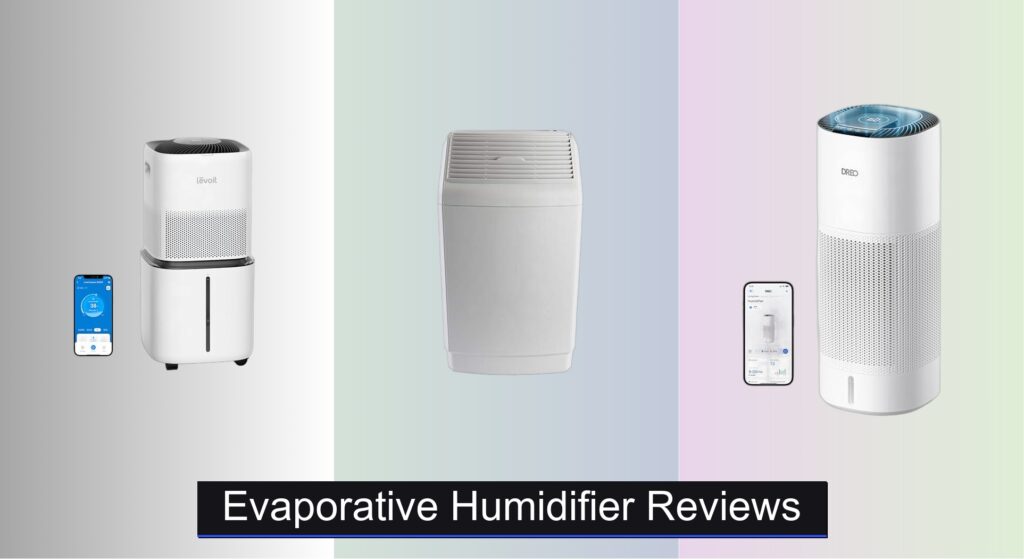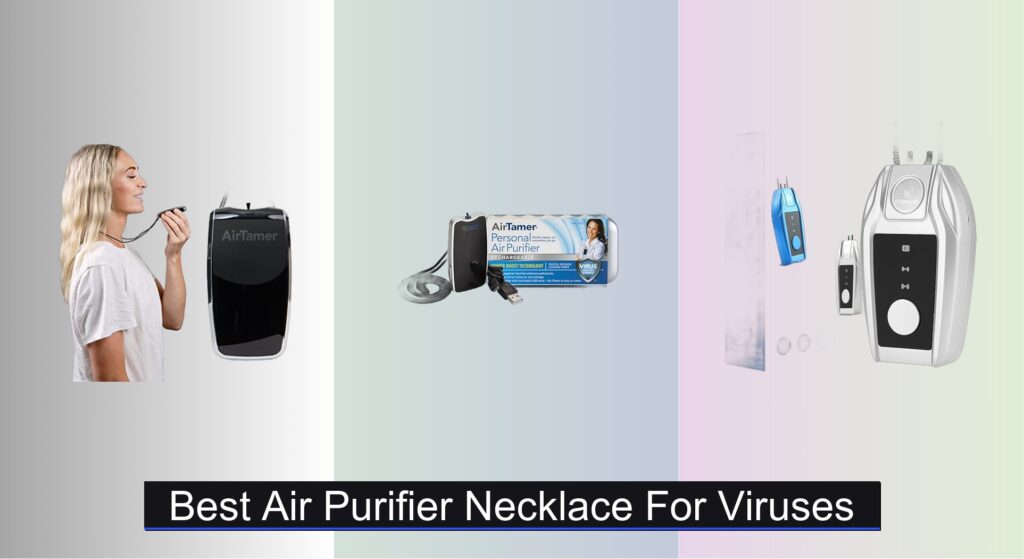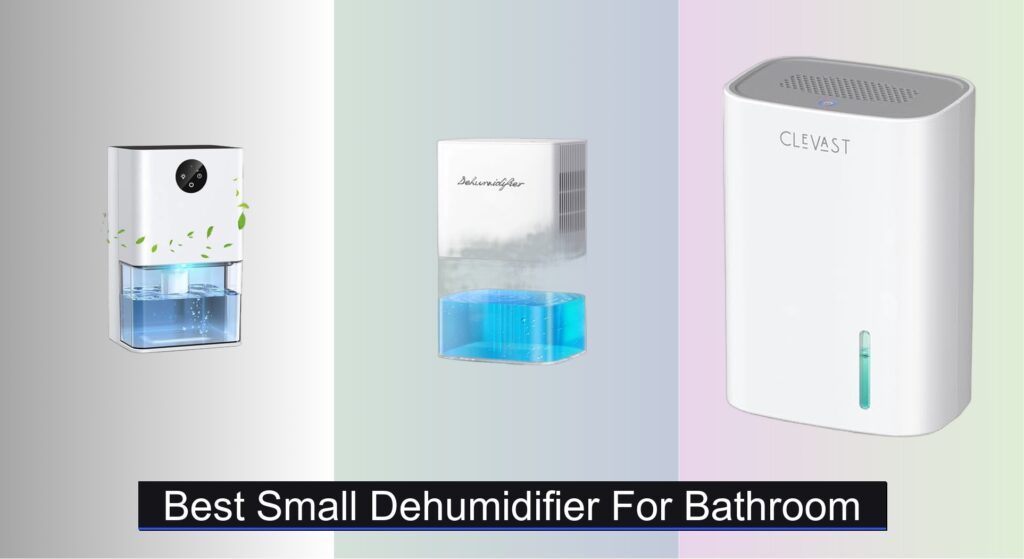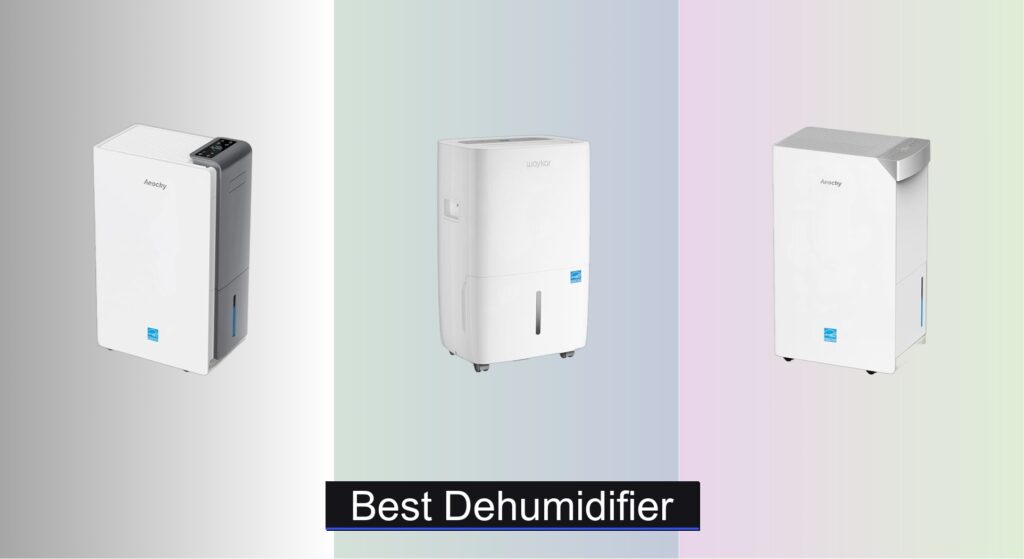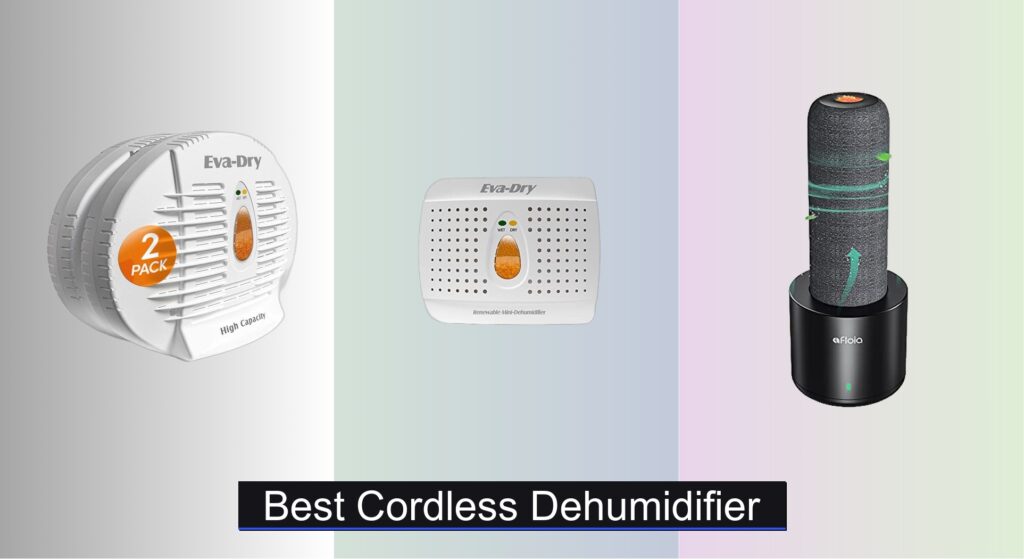Dry indoor air can aggravate respiratory issues, cause dry skin, and make winter months even more uncomfortable—especially in large homes where maintaining consistent humidity is a challenge. Unlike cool mist or ultrasonic models, evaporative humidifiers offer a natural, self-regulating way to add moisture to the air, reducing the risk of over-humidification and minimizing white dust and bacteria dispersal.
To find the best evaporative humidifier, we evaluated performance, coverage, smart features, and maintenance needs across top models on the market. Our analysis combines lab-verified output data, real-world user feedback, and expert insights on air quality, ensuring reliable, unbiased recommendations. Whether you need whole-house hydration or quiet bedroom operation, our tested picks deliver effective, efficient humidification. Keep reading to discover the top-rated evaporative humidifiers that meet rigorous standards for performance and value.
Best Options at a Glance
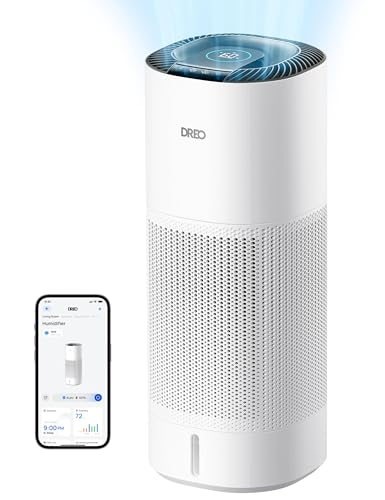
DREO Smart Evaporative Humidifier 10L
Best Smart Features
- 1000 ft”²
- 800 ml/h
- 10 L
- 50H
- App/Voice

BLUEAIR Premium Smart Humidifier
Best for Sleep
- 3.5L
- 48 hours
- 500 sqft
- Evaporative InvisibleMist
- App/Touchscreen/Voice

Levoit Superior 6000S Smart Humidifier
Best Overall
- 3000 sq. ft.
- 6 Gal
- 72-Hour
- 1500 ml/h
- Evaporative

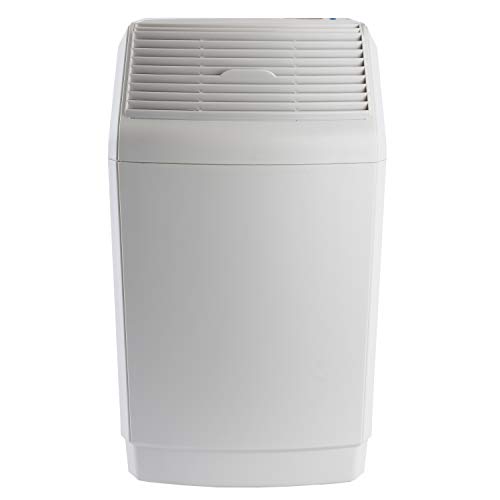
AIRCARE Space Saver Large Humidifier
Best Budget for Large Rooms
- 2,700 sq ft
- 6 Gallon
- Digital Controls
- Auto Humidistat
- Automatic Shut Off

Vornado Evap40 Evaporative Humidifier
Best for 1000 sq ft Rooms
- 1,000 sqft
- 4-Gallon
- Adjustable
- 3 Speed
- 1600 RPM (high)

Provirtec MistFree Smart Humidifier
Best Value Smart Option
- 3L
- 300 sq. ft.
- 28 dB
- APP/Voice
- No Mist

SU-4023B 1-Gallon Evaporative Humidifier
Best Budget Entry-Level
- 1 gallon
- Evaporative
- 1-knob
- 3 speeds
- Wick filter
Evaporative Humidifier Reviews Review
How to Choose the Right Evaporative Humidifier
Understanding Evaporative Humidification
Evaporative humidifiers work by using a fan to blow air through a wet wick or filter. This process naturally evaporates the water, adding moisture to the air without creating the hot steam or fine mist associated with other humidifier types. This makes them generally safer for households with children or pets, and less likely to leave mineral dust on surfaces. However, choosing the right evaporative humidifier depends on your specific needs.
Key Features to Consider
Room Coverage Area
Perhaps the most crucial factor is matching the humidifier’s coverage area to the size of the room. Humidifiers are rated by the square footage they can effectively hydrate. A unit designed for a 500 sq ft room won’t adequately humidify a 1,000 sq ft space, leading to discomfort and potential inefficiency. Larger rooms (over 1000 sq ft) will benefit from “whole-house” models with higher output capacities. Conversely, using an oversized humidifier in a small room can lead to excessive humidity and potential mold growth.
Water Tank Capacity & Runtime
A larger water tank means less frequent refilling, a significant convenience factor. Consider how often you’re willing to refill the humidifier. Some models offer runtimes exceeding 24 hours, while others might require daily refills. Runtime is also tied to the output setting; higher output levels consume water faster. Look for models with easily removable tanks for convenient filling and cleaning.
Smart Features & Control Options
Modern evaporative humidifiers increasingly offer smart features like Wi-Fi connectivity, app control, and voice assistant compatibility (Alexa, Google Assistant). These features allow you to remotely monitor and adjust humidity levels, set schedules, and receive alerts (like low water warnings). If you value convenience and precise control, a smart humidifier is a worthwhile investment. However, simpler models with manual controls are perfectly adequate for those who prefer a more straightforward approach.
Filter Type & Maintenance
Evaporative humidifiers rely on filters (often called wicks) to absorb water and facilitate evaporation. These filters require regular cleaning or replacement to maintain optimal performance and prevent the growth of bacteria and mold. Some filters are washable, offering a cost-effective solution, while others need to be replaced periodically. Consider the cost and availability of replacement filters when making your decision. Some models also include features such as anti-microbial treatments or UV-C light to help inhibit microbial growth within the unit.
Other Important Features
- Noise Level: Especially important for bedrooms or nurseries, look for models advertised as “quiet” or “whisper-quiet.”
- Auto Shut-Off: A safety feature that automatically turns off the humidifier when the water tank is empty.
- Humidistat: Allows you to set a desired humidity level, and the humidifier will automatically adjust to maintain it.
- Scale-Inhibitor: Some models include cartridges to reduce limescale buildup, particularly useful if you have hard water.
Evaporative Humidifier Comparison
| Product | Coverage Area (sq ft) | Tank Capacity (Gallons) | Smart Features | Filter Type | Noise Level | Water Type |
|---|---|---|---|---|---|---|
| Levoit Superior 6000S | 3000 | 6 | App Control, Voice Control | Premium Filter | Not Specified | Tap Water |
| AIRCARE Space Saver | 2700 | Not Specified | Auto Humidistat | Trapmax Filter | Not Specified | Tap Water |
| DREO Smart Evaporative 10L | 1000 | 10 | App Control, Voice Control | Washable Filter, Scale-Inhibitor | Not Specified | Tap Water |
| Levoit Sprout | Not Specified | Not Specified | Sensor-Based Humidity Control | Dual Filter (99% efficiency) | Not Specified | Tap Water |
| BLUEAIR Premium Smart | 500 | 3.5 | App Control, Voice Control | Anti-Microbial Wick | Quiet | Tap Water |
| Vornado Evap40 | 1000 | 4 | Humidistat Control | Two Humidifying Filters | Not Specified | Tap Water |
| Reusable Wick Large Room | 600 | 2 | Not Specified | Reusable Washable Wick | Not Specified | Tap Water |
| Provirtec MistFree Smart | 300 | Not Specified | App Control, Voice Control | Efficient Filter | 28 dB (Sleep Mode) | Tap Water |
| SU-4023B | Not Specified | 1 | None | Wick Filter | Not Specified | Tap Water |
How We Tested Evaporative Humidifiers
Our evaporative humidifier reviews are based on a multi-faceted approach, prioritizing data-driven analysis and established research on indoor air quality and humidity control. We don’t rely solely on manufacturer specifications. Instead, we analyze data from independent testing labs focusing on moisture output (measured in pints per day) and consistency across various fan speeds. We also examine energy efficiency ratings to determine long-term operational costs.
Comparative analysis forms a core part of our process. We benchmark evaporative humidifiers against each other, evaluating features like water tank capacity relative to runtime claims, and assess the accuracy of built-in humidistats using calibrated hygrometers. We scrutinize filter specifications, researching material composition and lifespan, considering the impact on maintenance costs and air purification.
While physical product testing isn’t always feasible for every model, we prioritize analyzing user feedback from verified purchases, identifying recurring themes related to noise levels, ease of cleaning, and durability. We cross-reference this data with expert opinions from HVAC professionals and publications specializing in indoor environmental health, ensuring a comprehensive and reliable evaluation of each evaporative humidifier. We also consider the impact of hard water on performance, referencing studies on limescale buildup and the effectiveness of scale-inhibiting technologies.
FAQs
What is the best size evaporative humidifier for my room?
The best size evaporative humidifier depends on your room’s square footage. Check the humidifier’s coverage area specification and choose a model rated for a similar size or slightly larger than your room. Using a unit that’s too small won’t effectively humidify the space, while one that’s too large can lead to excessive humidity.
How often do I need to clean or replace the filter in an evaporative humidifier?
Filter maintenance varies by model. Some filters are washable and can be cleaned regularly, while others need periodic replacement. Refer to the manufacturer’s instructions for specific recommendations. Regular maintenance is crucial to prevent mold and bacteria growth and maintain optimal performance of your evaporative humidifier.
Can I use distilled water in my evaporative humidifier?
While tap water is generally suitable for most evaporative humidifiers, using distilled water can help reduce mineral buildup and prolong the life of the unit, especially if you have hard water. However, distilled water lacks minerals that can help control bacterial growth, so regular cleaning is still essential.
Are evaporative humidifiers noisy?
Noise levels vary between models. Look for humidifiers advertised as “quiet” or “whisper-quiet,” especially if you plan to use it in a bedroom or nursery. User reviews and product specifications often provide information about the noise level (measured in decibels) of an evaporative humidifier.
The Bottom Line
Choosing the right evaporative humidifier involves considering room size, desired features, and maintenance requirements. By carefully evaluating coverage area, tank capacity, and filter type, you can find a model that effectively and efficiently adds moisture to your home environment, promoting better health and comfort.
Ultimately, the best evaporative humidifier is the one that best fits your needs and lifestyle. Whether you prioritize smart features, quiet operation, or ease of maintenance, the models reviewed offer a range of options to enhance your indoor air quality and create a more pleasant living space.

